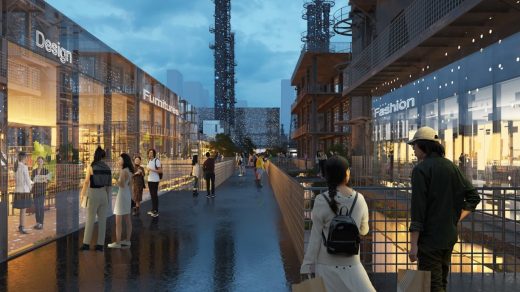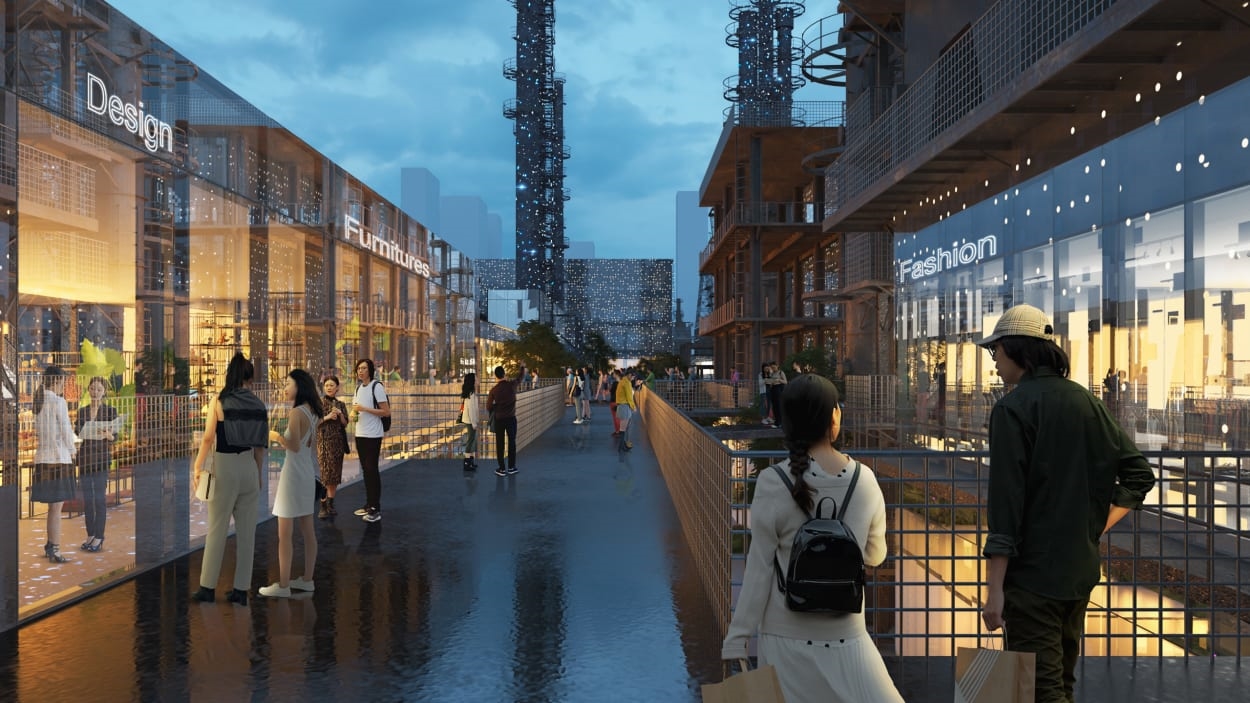This former oil refinery is being transformed into refurbished office buildings and lush parks
As the world transitions to clean energy, what will happen to the fossil fuel infrastructure that’s left behind? Some former coal plants have moved to solar or wind power. Others are reusing the space for housing, as in a new 15-minute neighborhood at a shuttered coal plant near Toronto. In Hangzhou, China, along a section of the country’s 1,100-mile-long Grand Canal, a former industrial district is keeping some relics of the past after an oil refinery and concrete factory have closed.
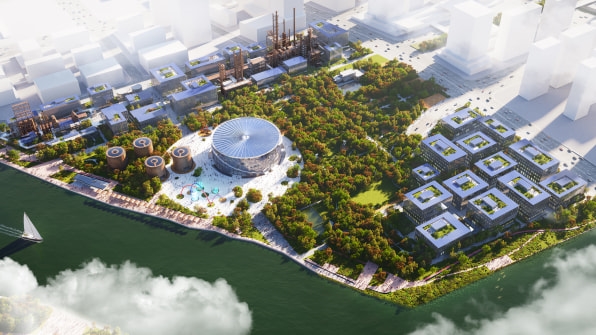
“I think it’s good to show what has been there, so you can do something in contrast with that, and you see the learning curve of history,” says Winy Maas, founding partner of MVRDV, the Dutch architecture firm that redesigned the space, along with the landscape architecture and urban design company Openfabric. The project, which is part of a larger effort to reclaim the waterfront on the Grand Canal for communities, will bring new office space, art studios, stores, and a museum to the site, along with forested park space.
MVRDV has done similar work in other contexts. In Albania, for example, it helped turn a pyramid built by a former dictator into new classrooms, cafés, and tech company offices. “We purposely didn’t demolish it,” he says. “But now you can walk over it, and learn to live with its history.” The same should be true, he argues, “for the fossil epoch—to be aware that maybe it should never come back.”
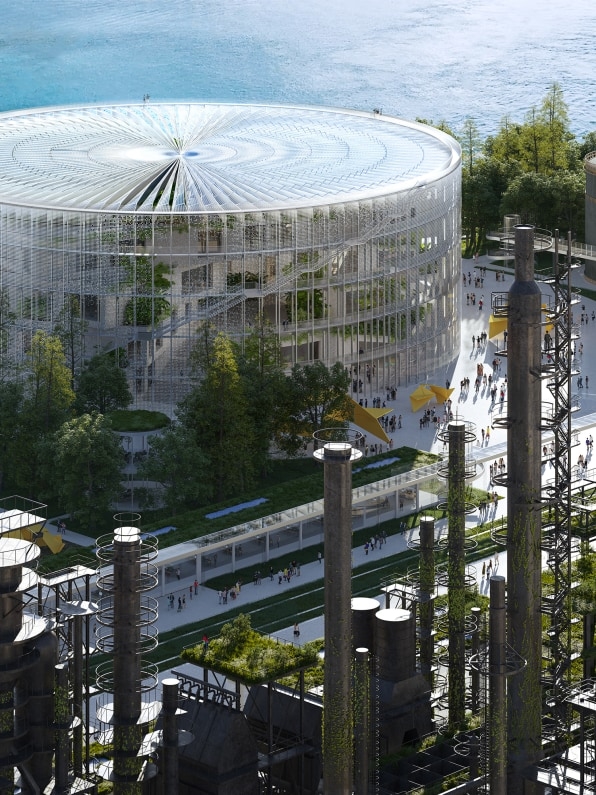
At the Hangzhou site, where construction on some buildings will begin later this year, some old structures have been demolished as pollution is being cleaned up. But other silos from the refinery will stay standing and find new use as retail stores. Some buildings that have been taken down will be rebuilt in similar designs, housing offices for tech startups. A new tech museum, at the center of the site, echoes the shape of the silos and will also house art studios and offices. The space is heated and cooled passively to save energy, and the façade is covered with a “solar painting” of photovoltaic panels that are strategically positioned to capture the most energy.
Solar panels will also be plastered on other buildings throughout the site and incorporated into roads, so as much energy is produced locally as possible. The stone foundations of the buildings will act as batteries, Maas says, storing energy in the form of heat. While final calculations are still underway, the district may produce more energy than it consumes. “We want to make a completely self-sufficient neighborhood,” he says.
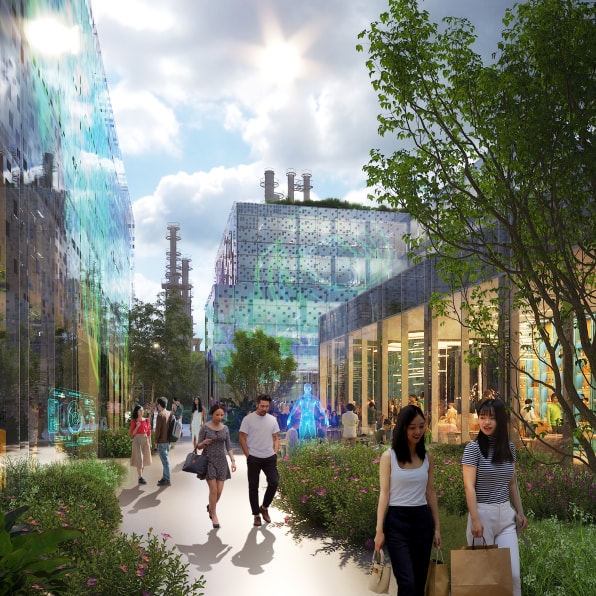
(13)

